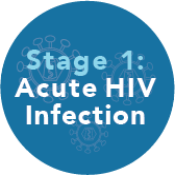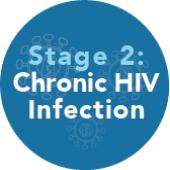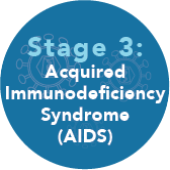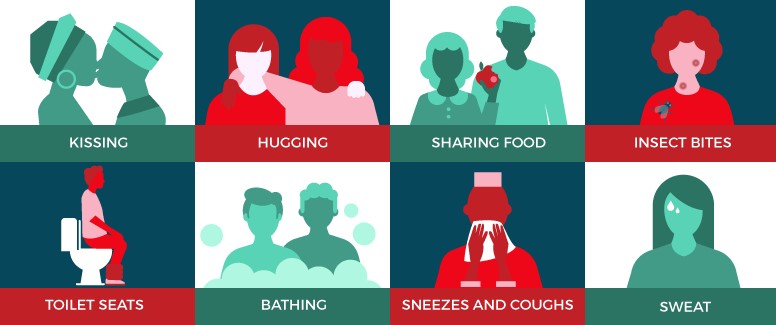ABOUT HIV/AIDS
HIV (human immunodeficiency virus) is a virus that attacks the body’s immune system. If HIV is not treated, it can lead to AIDS (acquired immunodeficiency syndrome). Learning the basics about HIV can keep you healthy and prevent HIV transmission. You can also download materials to share or watch videos on basic information about HIV.
What is HIV?
1.HIV (human immunodeficiency virus) is a virus that attacks the body’s immune system. If HIV is not treated, it can lead to AIDS (acquired immunodeficiency syndrome).
2.There is currently no effective cure. Once people get HIV, they have it for life.
3.But with proper medical care, HIV can be controlled. People with HIV who get effective HIV treatment can live long, healthy lives and protect their partners.

Where did HIV come from?
1.HIV infection in humans came from a type of chimpanzee in Central Africa.
2.The chimpanzee version of the virus (called simian immunodeficiency virus, or SIV) was probably passed to humans when humans hunted these chimpanzees for meat and came in contact with their infected blood.
3.Studies show that HIV may have jumped from chimpanzees to humans as far back as the late 1800s.
Over decades, HIV slowly spread across Africa and later into other parts of the world. We know that the virus has existed in the United States since at least the mid to late 1970s.

Are there symptoms?

Some people have flu-like symptoms within 2 to 4 weeks after infection (called acute HIV infection). These symptoms may last for a few days or several weeks. Possible symptoms include
- Fever
- Chills
- Rash
- Night sweats
- Muscle aches
- Muscle aches
- Fatigue
- Swollen lymph nodes
- Mouth ulcers.
What are the stages of HIV?
When people with HIV don’t get treatment, they typically progress through three stages. But HIV medicine can slow or prevent progression of the disease. With the advancements in treatment, progression to Stage 3 is less common today than in the early days of HIV.
Stage 1: Acute HIV Infection
- People have a large amount of HIV in their blood. They are very contagious.
- Some people have flu-like symptoms. This is the body’s natural response to infection.
- But some people may not feel sick right away or at all.
- If you have flu-like symptoms and think you may have been exposed to HIV, seek medical care and ask for a test to diagnose acute infection.

Stage 2: Chronic HIV Infection
- This stage is also called asymptomatic HIV infection or clinical latency.
- HIV is still active but reproduces at very low levels.
- Without taking HIV medicine, this period may last a decade or longer, but some may progress faster.
- People can transmit HIV in this phase.
- At the end of this phase, the amount of HIV in the blood (called viral load) goes up and the CD4 cell count goes down. The person may have symptoms as the virus levels increase in the body, and the person moves into Stage 3.
- People who take HIV medicine as prescribed may never move into Stage 3.

Stage 3: Acquired Immunodeficiency Syndrome (AIDS)
- The most severe phase of HIV infection.
- People with AIDS have such badly damaged immune systems that they get an increasing number of severe illnesses, called opportunistic infections.
- People receive an AIDS diagnosis when their CD4 cell count drops below 200 cells/mm, or if they develop certain opportunistic infections.
- People with AIDS can have a high viral load and be very infectious.
- Without treatment, people with AIDS typically survive about three years.

HIV transmission: Know the facts
Anyone can contract HIV. The virus is transmitted in bodily fluids that include:
- blood
- semen
- vaginal and rectal fluids
- breast milk
- through vaginal or anal sex — the most common route of transmission
- by sharing needles, syringes, and other items for injection drug use
- by sharing tattoo equipment without sterilizing it between uses
- during pregnancy, labor, or delivery from a pregnant person to their baby
- through exposure to the blood, semen, vaginal and rectal fluids, and breast milk of someone living with HIV, such as through a needle stick.
- skin-to-skin contact
- hugging, shaking hands, or kissing
- air or water
- sharing food or drinks, including drinking fountains
- sharing a toilet, towels, or bedding
- mosquitoes or other insects
Some of the ways HIV is transferred from person to person include:
HIV does NOT transfer through:

It’s important to note that if a person living with HIV is being treated and has a persistently undetectable viral load, it’s virtually impossible to transmit the virus to another person.
HIV/AIDS TREATMENT CENTERS IN TAMILNADU
- Govt Hospital for Thoracic Medicine, Tambaram Sanatorium, Chennai
- Madras Medical College, Chennai ( opposite central railway station)
- Kilpauk Medical College Hospital, Chennai
- Salem Medical College Hospital, Salem
- Govt District Headquarters Hospital, Namakkal
- Madurai Medical College Hospital, Madurai
- Tirunelveli Medical College Hospital, Palayam Kottai (near Tirunelveli)
For more details visit
https://tnsacs.in/care
http://www.naco.gov.in/care-and-support-centres-0
